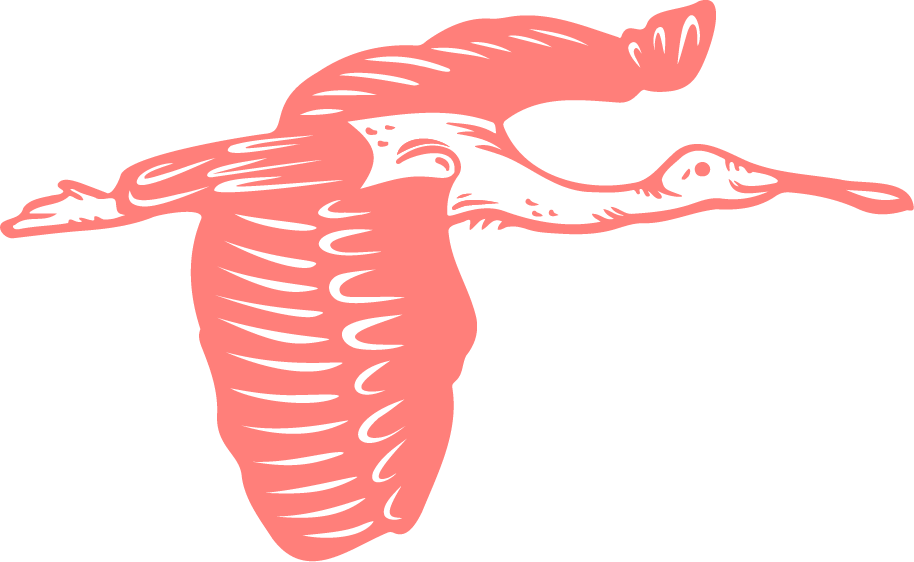Background information on entanglement at Skyway Fishing Pier
The impacts of seabird entanglement at the Skyway Fishing Pier have been apparent for many years. According to FWC data in the past two years alone, over 3,300 birds have been rescued, over 1,000 have been rehabilitated from severe injury, and more than 500 birds have died from entanglements. It is important to note that these numbers only include observed incidents of entanglement at the Skyway Fishing Pier, and do not account for all the birds that are secondarily entangled when a pelican dragging fishing line entangles other birds at roosting sites and rookeries. As a result, FWC’s numbers represent a significant underestimate of the total impact to waterbirds due to entanglements originating at the Skyway Fishing Pier.
Over the past decade, Audubon Florida, as well as local Audubon chapters and wildlife rescue groups have attempted to ameliorate these harms with organized efforts to educate anglers at the Skyway Fishing Pier. Since 2013, Audubon chapters have produced outreach materials, conducted one-on-one education at the pier, and produced videos about how to safely unhook entangled birds. In addition to educating anglers at the Skyway Fishing Pier, extensive efforts have been taken to rescue and rehabilitate entangled pelicans. All of these good faith efforts have been undertaken at private cost and with a tremendous amount of volunteer time and energy. Non-regulatory means have proven insufficient at addressing the problem over the last ten years, demonstrating that common sense regulatory changes are warranted.
Audubon Florida supports the proposed rules intended to reduce severe seabird entanglement at the Skyway Fishing Pier, including restricting use of treble hooks, sabiki rigs, and other multi-hook rigs on a year-round basis as a good first step to reducing the incidence of severe entanglement at the pier.
Here are a few talking points that you may consider using when providing public comment. Additionally, feel free to draw from your own experience and perspective on the issue.
Severe entanglement of seabirds occur year-round at the Skyway Fishing Pier, and FWC needs to restrict the use of multi-hook rigs at the Pier to protect pelicans and other birds from severe entanglement leading to gruesome injury and death. Choosing to enact gear restrictions only during certain seasons or certain times of day fails to adequately address the severe entanglement of Tampa Bay’s iconic wildlife. A year-round ban on multi-hook rigs at the Skyway Pier is a middle-of-the-road option that will help to reduce the incidence of severe entanglement of seabirds, while preserving anglers’ access to fishing opportunities at the Skyway Pier. The Skyway Pier has higher rates of entanglement than other piers in the area, and restrictions to the most deadly gear types are necessary to balance the disproportionate level of entanglement that occurs at this site.
The alarmingly high numbers of pelicans and other seabirds that have been documented as injured and dead as a result of entanglement at the Skyway Pier in recent years is heartbreaking, but only represents a fraction of the true toll that entanglements have had on our seabirds. Many entangled birds fly or swim away from the Skyway Pier uncounted, and their suffering goes undocumented. Often those birds will return to roosting or nesting sites, where they become entangled in the mangroves and die. Long after the death of the original bird who carried the hazard to the island, the fishing line remains in the busy rookery island, entangling and killing many other birds, including threatened species such as Reddish Egrets and Roseate Spoonbills. FWC must act swiftly to reduce entanglements of our wildlife at the Skyway Pier.
Over the past decade, wildlife groups have worked to reduce entanglement at the Skyway Pier through education. Education efforts include production and distribution of outreach materials, conducting one on one education at the pier, and produced videos about how to safely unhook entangled birds. Additionally, extensive efforts have been taken to rescue and rehabilitate entangled pelicans. All of these good faith efforts have been undertaken at private cost and with a tremendous amount of volunteer time and energy. Nonregulatory means of reducing entanglement remain important, but have proven insufficient over the last ten years, demonstrating that common sense regulatory changes are warranted.


